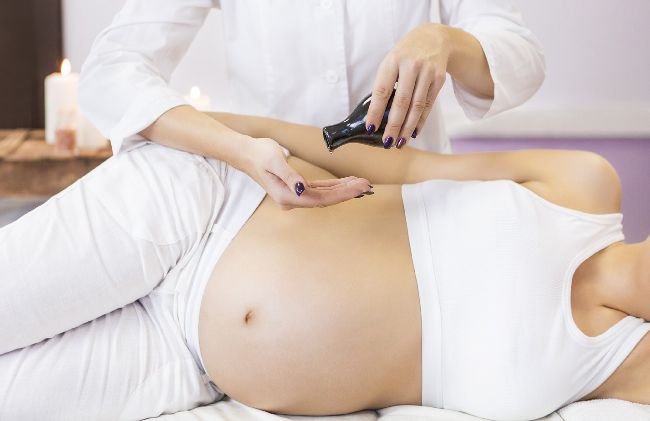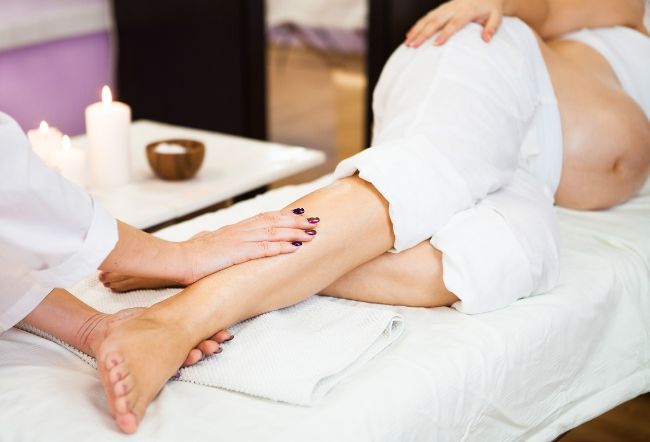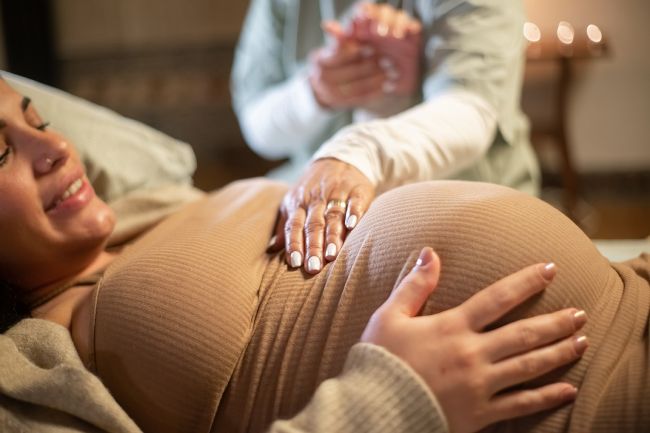ASK THE Experts
Our beauty industry experts answer questions about every aspect of running a successful salon or spa business.

Image from Shutterstock
How can my spa integrate the services of a doula to tap into the pregnancy market?
According to WOMBS (Women Offering Mothers Birth Support), a South African Professional Doulas Body (HTTPS://www.wombs.org.za), a doula is a trained professional who provides continuous physical, emotional and informational support to their client before, during and shortly after childbirth to help them achieve the healthiest, most satisfying experience possible. Doulas have a positive impact on the wellbeing of the entire family.
Pregnant mothers are often cautious about spa treatments and therefore need a massage therapist who is educated and vigilant about precautions and contraindications throughout the client’s pregnancy journey. They must be able to perform treatments with the expectation of soothing and diminishing any of the client’s discomforts, while ensuring that she feels grounded and at ease in her body.
As doulas, we aim to create a safe environment for the mother and her unborn child, which often puts the mother at peace. This is important because pregnant clients will only return for treatment to someone that they trust and who has their best interest at heart and is not just out for financial gain.
Doulas come with love and care for their clients and therefore have more insight with regards to what momsto-be need at each stage of pregnancy. For example, during early pregnancy / 1st trimester, most pregnant ladies have nausea and food aversions so it makes sense to use massage oils that have no distinct fragrance or aroma. The 3rd Trimester is characterised by swollen ankles and hands, sometimes puffiness on face, and thirst with frequent urination. This means that therapists will have to be gracious and allow time for client to go to the loo. It’s also advisable for the therapist to encourage all pregnant ladies to use the bathroom before lying down to receive their massage.
''STUDIES HAVE SHOWN
that women who
RECEIVE A CARING TOUCH
during
PREGNANCY
have a
GREATER CAPACITY
to
ATTEND TO THEIR INFANTS
with an increased devotion of
NURTURING ENERGY.''

Image from Shutterstock
The power of touch
Receiving a compassionate touch does more than help an expectant mom to feel good. Birth doulas are aware of risk factors, especially towards the end of pregnancy, such as Pre-Eclampsia (high blood pressure), which means that swollen ankles should not be taken lightly if pitting occurs after testing the swollen ankles. In terms of gestational diabetes, therapists need to be wary and let the client know that easy bruising can occur reasonably quickly.
Studies have shown that women who receive a caring touch during pregnancy have a greater capacity to attend to their infants with an increased devotion of nurturing energy. Once a woman has reached the late 2nd and 3rd trimester, she will benefit the most from a touch that helps to create length and space in her body, defying the forces of gravity that may be causing a collapse in her chest, tension in her neck, constriction in her groin area, and tightness in lower back area.
Massage benefits
Pregnancy is usually a time in most woman’s lives that generally has an increased need for emotional and physical nourishment and care known as nurturance. The pregnancy massage technique includes stretching and muscular work and massage that elongates the areas that are shortening and compressing as the pregnancy progresses, while different adaptations of the client’s posture as the baby grows and weight gain occurs are applied. Massage therapy presents many benefits for pregnant women as they navigate the different stages of their term.
''LATERAL POSITIONING
during a
MASSAGE IS NECESSARY
through at least
HALF OF A WOMAN’S PREGNANCY
and the
THERAPIST NEEDS TO LEARN
how to
WORK COMPETENTLY
in this position.''
Research evidence by Dr Tiffany Field shows that prenatal massage therapy can help reduce anxiety, decrease symptoms of depression, relieve muscle aches and joint pains, and improve labour outcomes and newborn health. She has also done extensive research on premature baby massage and positive effects of touch therapy at this stage.
Improved hormone regulation is evident in terms of hormone levels associated with relaxation (oxytocin) and stress (cortisol). Both are significantly altered when massage therapy is introduced to women’s prenatal care. This then encourages mood regulation and improved cardiovascular health.
In women who received bi-weekly massages for only five weeks, hormones such as norepinephrine and cortisol (hormones associated with stress) were reduced, and dopamine and serotonin levels increased. (Depression equates to low levels of dopamine and serotonin).
Reduced circulation and increased pressure on the major blood vessels by the heavy uterus mainly causes oedema (water retention /swelling). Massage helps to stimulate soft tissues to reduce the collection of fluids in swollen joints. This also improves the removal of tissue waste carried by the body’s lymph system.
One of the main benefits of prenatal massage is improving nerve pain. Some clients coming in with Sciatic pain seem to have reduced pain even after a single prenatal massage technique. It is mainly experienced by many women in late pregnancy, as the uterus rests on muscles of the pelvic floor and lower back. Massage therapy addresses the inflamed nerves by helping to release the tension on nearby muscles.
Relaxation
Therapists should aim to help the client relax. Breathing techniques for relaxation also help. In what I call a rhythmical type of massage, the therapist encourages the client to breathe effectively as they go deeper into the muscle during massage.
Since a pregnant woman’s posture changes drastically throughout pregnancy, the therapist needs to take time before a session to observe the client’s posture and show how she can adjust it. Lateral positioning during a massage is necessary through at least half of a woman’s pregnancy and the therapist needs to learn how to work competently in this position. Positioning for massage and bodywork usually means lying on the side, semi-reclining, and prone and supine positions. It’s important to use pregnancy pillows for massage treatments.

Image from Shutterstock
Practical aspects
There are basic practical aspects that are a part of any massage.
• Safe environment: communication and feedback channels between client and therapist are key. The therapist must make sure the client understands what the client needs and ensure to meet those needs but first explain how they will do so.
• Relaxing touch: the therapist must use slow, even and consistent strokes that encourage relaxation. Pressure must be adjusted accordingly but should be intentional pressure as opposed to light feathery pressure that is often not effective. Avoid pressure directly on bones.
• Proper body mechanics: therapists are encouraged to use proper body mechanics and client positioning to ensure that neither the giver nor the receiver experiences muscular strain.
• Breath: use breath rhythm to facilitate deeper relaxation. (The cultivation of an association between breath and relaxation during pregnancy will become a powerful ally during birth.)
''A thorough
CLIENT CARD
or
HEALTH INTAKE
prior to the
FIRST MASSAGE
with a client
MUST BE DONE
and should be
UPDATED
AT
each session.
THIS IS VITAL.''
• Hydration: keep the client hydrated during massage by offering a large glass of water to help flush cellular waste. Dehydration can lead to premature uterine irritability and contractions.
• Avoid heartburn: adjust the position accordingly with proper pillow propping up and if possible, encourage clients to wait at least 2 hours after eating a meal before getting a massage. Heartburn is a common complaint during late pregnancy.
Throughout pregnancy, regardless of trimester, the following reminders apply:
• A thorough Client Card or health intake prior to the first massage with a client must be done and should be updated at each session. This is vital.
• Observe and use precautions for varicose veins and deep vein thrombosis.
• Avoid contraindicated acupressure points until 38 weeks, and take note of precautionary points, which are contraindicated with those at high risk for miscarriage or preterm labour.
• Therapists should be able to teach the client early on about the proper body mechanics for pushing up from supine positioning while avoiding abdominal strain and help establish this method of sitting up as the pregnancy progresses.
Maternity Wellness & Birth Coach, Tsholo Bless, completed a BSc.BioMedicine degree and has a wealth of knowledge about pregnancy. She provides support to pre/ postnatal women along their journey to motherhood. Her main focus is Science of Birth, a holistic lifestyle hub for women to explore their creative edge through wellbeing.
This article was compiled using information from the following sources: 1. Field, T. (1999). Pregnant Women Benefit From Massage Therapy. Journal of Psychosomatic Obstetrics and Gynaecology, Mar;20(1):31-8.
2. Field, T. (2004). Massage Therapy Effects on Depressed Pregnant Women. Journal of Psychosomatic Obstetrics and Gynaecology, Jun;25(2):115-22.
3. www.dona.com